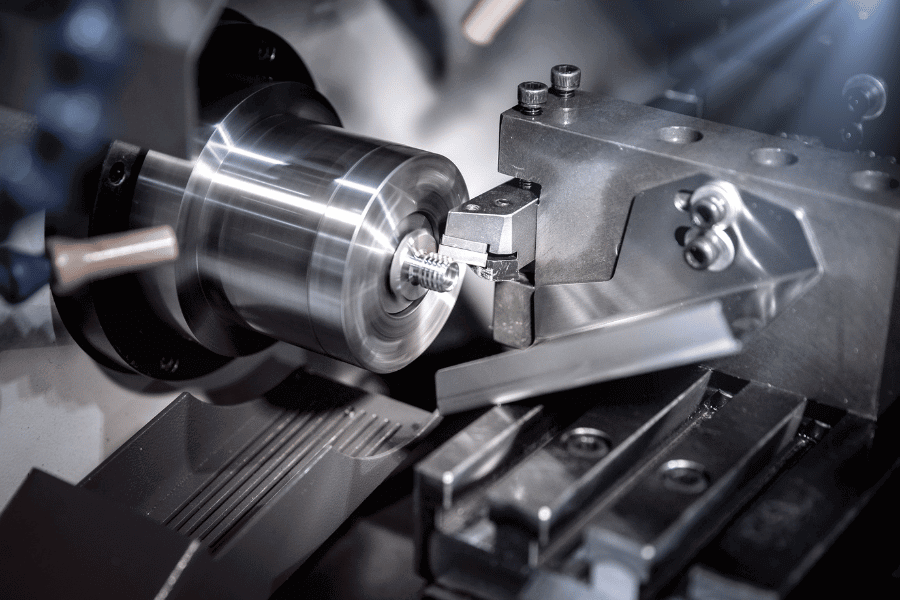Aluminum CNC Machining Knowledge
Aluminium is a non-ferrous metal that is commonly used for a variety of purposes. Manufacturers often use aluminium for a variety of products because it is inexpensive, non-toxic, recyclable, and machinable, making it an ideal material for CNC machining. Even CNC machining uk has a wide range of applications.
However, understanding aluminum CNC machining is essential to realizing the full potential of aluminum. This article discusses aluminum CNC machining, the benefits of using aluminum for CNC machining, and the different grades of aluminum used in CNC machining. You will also learn about standard aluminum CNC machining techniques and applications.
1.Introduction to Aluminum CNC Machining
Aluminum is a versatile metallic material that is commonly used for different purposes across a variety of industries. Pure aluminum is soft, non-magnetic, and ductile, and can be alloyed with various elements such as magnesium, copper, and manganese to create different alloys with different improved properties.
Due to the excellent machinability of aluminum, aluminum CNC machining is one of the top machining operations in terms of how often it is performed. Manufacturers rely on aluminum CNC machining to create different precision aluminum parts that meet the requirements of the intended application. The process involves using a CNC router to shape the aluminum into the desired shape and size.
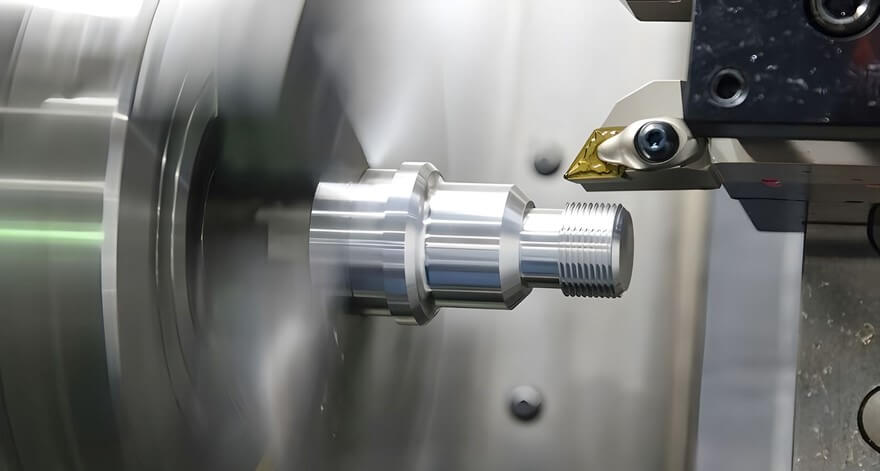
2.Advantages of Aluminum in CNC Machining
Aluminum alloys have various properties that make them ideal for CNC machining applications.
1) Strength-to-weight ratio
With a density of about one-third that of steel, aluminum is a relatively light metal. And, while aluminum is lightweight, its strength is very high. Therefore, this high strength-to-weight ratio makes aluminum an ideal choice for CNC machining automotive and aerospace applications.
2) Machinability
Compared to other metals, aluminum alloys are easier to form and machine. You can cut aluminum easily and quickly using machine tools because aluminum is soft and easily breaks. At the same time, aluminum alloys are less expensive and require minimal power for machining. Excellent machinability of aluminum alloys helps reduce the risk of deformation during machining. Therefore, it ensures higher precision in machining custom aluminum parts because CNC machines can easily achieve tight tolerances.
3) Corrosion resistance
Aluminum exhibits natural corrosion resistance in different atmospheric conditions. At the same time, you can also anodize aluminum machined parts to enhance these properties. In addition, it is helpful to understand that different aluminum grades have different corrosion resistance. Despite this, the most widely used CNC machining grades still have excellent corrosion resistance.
4) Conductivity
Pure aluminum has an electrical conductivity of about 37.7 million Siemens/meter at room temperature. Aluminum alloys are able to provide conductivity to their parts, making them suitable for electrical components, even though their conductivity may be lower than that of pure aluminum. However, if conductivity is not the main requirement for machined parts, aluminum alloys will not be suitable.
5) Custom Finishing
Aluminum machined parts are compatible with a variety of surface treatments such as chromate conversion coating, anodizing, powder coating, and spraying to achieve the custom appearance preferred by your project, which is highly adjustable.
6) Recyclability
The CNC machining process produces constant chips, which are considered waste because it is a subtractive process. However, aluminum is highly recyclable; therefore, it only takes cost, effort, and minimal energy to recycle it. In addition, this feature makes aluminum ideal for manufacturers who want to recover costs or reduce material waste. Similarly, the recyclability of aluminum makes it a more environmentally friendly processing metal, which means that aluminum will continue to occupy an important position in the future.
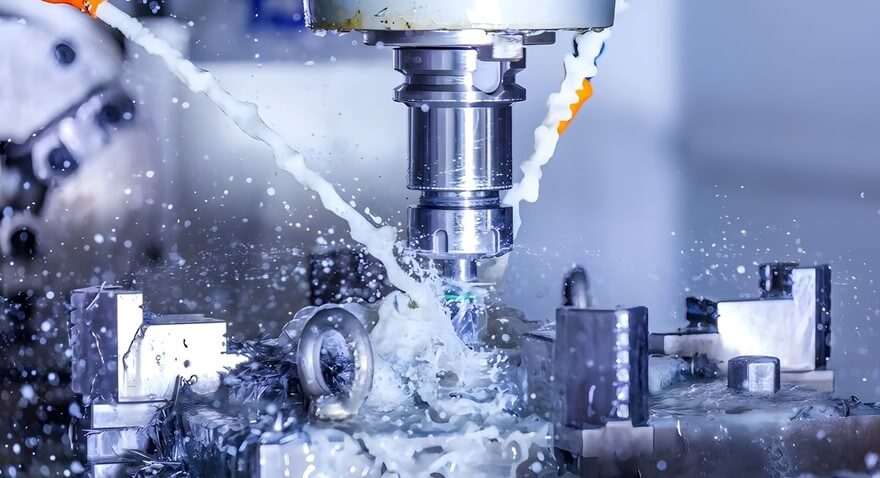
3.Aluminum Grades for CNC Machining
When selecting an aluminum alloy for a specific application, always refer to the manufacturer or industry specifications. Typically, pure aluminum materials contain 99% to 99.6% aluminum, with the remainder made up of other alloying elements, including zinc, magnesium, silicon, manganese, and copper. This section discusses common aluminum alloys based on their primary alloying elements:

1) 1000 Series
1xxx aluminum alloys have the highest percentage of pure aluminum, about 99% aluminum. There are no specific alloying elements, and most of these alloys are nearly pure aluminum. For example, 1199 aluminum alloy is 99.99% aluminum, making it ideal for making aluminum foil. While these grades of aluminum alloys are the softest, you can also harden them to make them stronger with continued deformation.
2) 2000 Series
The primary alloying element of 2xxx series aluminum is copper. These are heat-treatable aluminum alloys that are made by precipitation hardening to be nearly as hard and strong as steel. This heat-treating process increases the yield strength of these aluminum alloys by heating the aluminum material to cause precipitates of other metals to float out of the metal. While aluminum alloys in this category have lower corrosion resistance, aluminum 2024 contains manganese and magnesium, which makes it corrosion resistant. It is also ideal for aerospace CNC machining.
3) 3000 Series
The main alloying element of the 3xxx series aluminum is manganese. However, since these grades of aluminum cannot be heat treated, you can harden these aluminum alloys to achieve the desired hardness level. For example, 3004 aluminum contains magnesium, and it is one of the commonly used aluminum alloys for making beverage cans. Similarly, 3003 is also a general-purpose alloy with a wide range of uses.
4) 4000 Series
Silicon is the main alloying element of the 4000 series aluminum. The silicon content causes the 4xxx aluminum grades to have a lower melting point. Among them, 4047 aluminum is ideal for use as building panels and cladding, while 4043 aluminum is an ideal filler rod material for welding 6000 series alloys.
5) 5000 Series
The 5000 series has magnesium as the main alloying element. These aluminum grades have good corrosion resistance. Therefore, they are ideal for marine or other applications that expose aluminum to extreme elements. Aluminum 5083 is one alloy that is commonly used in marine applications.
6) 6000 Series
The 6xxx series contains silicon and magnesium as its main alloying elements. You can easily machine the 6000 series aluminum alloys, which are precipitation hardened. Most of the aluminum alloys in this series, especially 6061, are versatile and corrosion resistant, and are widely used in structural parts and aerospace.
7) 7000 Series
Zinc, sometimes magnesium, chromium, and copper are the main alloying elements of these aluminum alloys. These aluminum grades reach peak strength after precipitation hardening. The 7xxx grades have typical applications in the aerospace industry due to their high strength. Meanwhile, 7075 is a popular grade that has better corrosion resistance than the other aluminum alloys, but it has superior corrosion resistance than the 2xxx aluminum alloys. This alloy is generally applicable, so it is mainly used in aerospace parts processing.
8) 8000 Series
The 8000 series includes aluminum alloys that do not belong to any of the categories discussed previously. These aluminum alloys may contain a variety of other elements, such as lithium and iron. 8176 aluminum contains 0.1% silicon and 0.6% iron by weight, and typical applications include wire, etc.
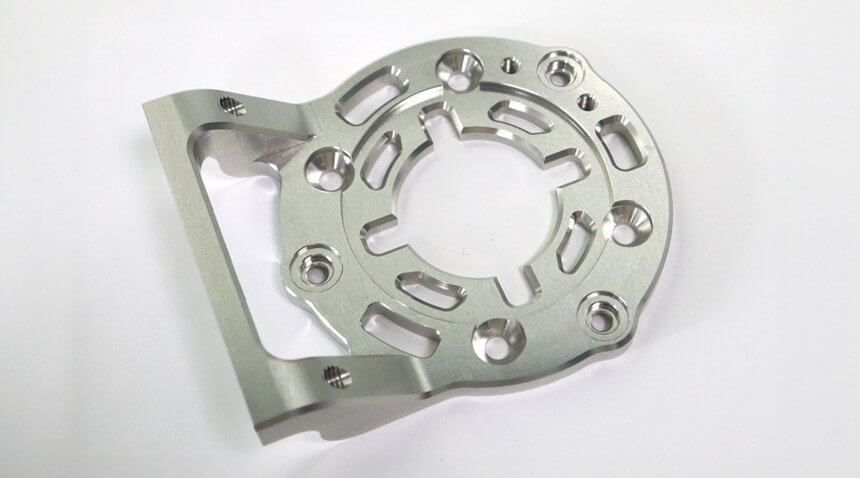
4.Best aluminum grades for CNC machining
While different grades of aluminum are suitable for various CNC machining applications, some aluminums show better performance than others. This section discusses the best aluminum alloys for CNC machining.
1) 6061 aluminum alloy
Aluminum 6061 is widely used in general manufacturing, construction, consumer products, and aerospace industries due to its versatility and excellent weldability. This medium-strength alloy can be heat-treated and has high corrosion resistance. You can process this aluminum alloy using different techniques and it shows excellent machinability in the annealed state.
2) 7075 aluminum alloy
Aluminum 7075 is one of the strongest aluminum alloys. This high-strength alloy has good fatigue resistance and is ideal for making parts for high-stress applications. Therefore, 7075 aluminum is a frequently used material in aerospace applications. At the same time, it also has aerospace-grade strength, which is ideal for making complex parts.
5.Aluminum CNC Machining Cost
The CNC machining cost of aluminum consists of several major aspects.
- Raw material price
- Machining time
- Labor cost
- Tool wear
- Product complexity
The cost of aluminum has a distinct advantage over CNC machining of other metals, such as steel. The raw material cost of aluminum is generally lower than that of steel, which is reflected in the overall price. Secondly, because aluminum is softer, it is easier and faster to machine, often in half or even a quarter of the time required for steel parts. This efficiency reduces labor costs and speeds up production.
However, the abrasive nature of aluminum can lead to more frequent tool changes, which can increase tool costs. In contrast, steel is more ductile and requires more time and effort to machine, which increases operating costs. In addition, machining steel generally increases tool wear and energy consumption. Despite these challenges, the longevity and durability of steel may be necessary in certain applications.
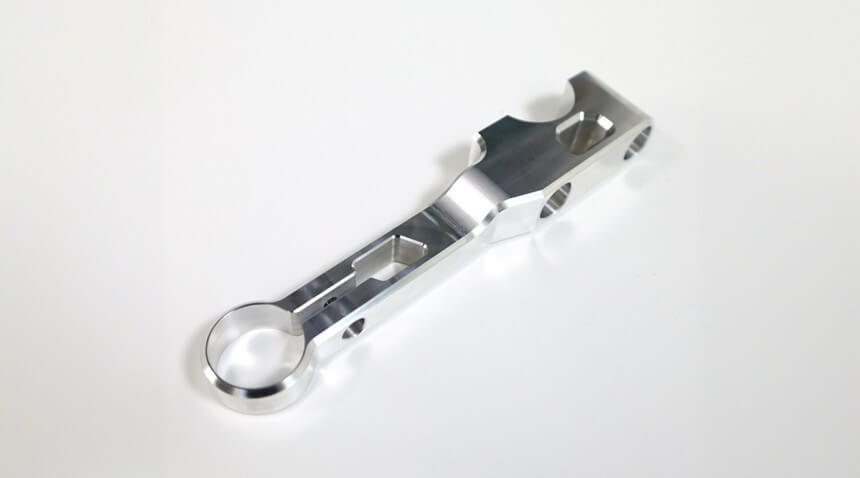
6.Common Aluminum CNC Machining Techniques
This section discusses different machining processes applicable to aluminum alloys.
1) CNC Milling
CNC milling is an automated process that is used to cut aluminum parts, usually by rotating multiple points. The tool moves along its axis while the workpiece remains stationary along its axis. The CNC milling cutter gradually removes material from the aluminum workpiece at a controlled speed, which can be done along multiple axes. High tolerances can be achieved when milling aluminum, and complex parts can be completed.
2) CNC Drilling
CNC drilling is a common technique for drilling holes in aluminum workpieces. It involves using a multi-point rotating cutting tool of a specific size, moving in a straight line perpendicular to the material to be drilled. This process is suitable for machining products that need to be assembled or accommodate screws and bolts.
3) CNC Turning
Aluminum CNC turning involves rotating the workpiece while the single-point cutting tool remains stationary along its axis. The cutting tool or the workpiece is fed relative to each other, depending on the machine that removes the material. The raw material rotates at high speed, while the turning center removes material to form the desired shape.
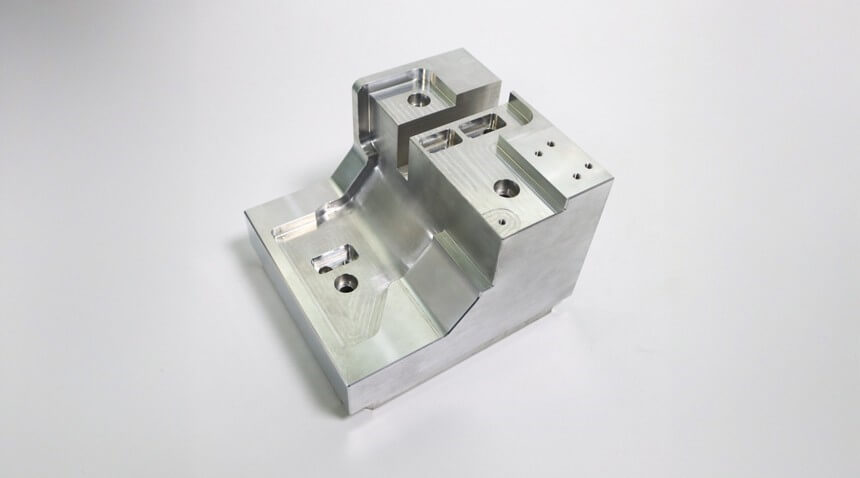
7.Key Challenges in Aluminum CNC Machining
Despite the excellent machinability of aluminum, manufacturers and product engineers often encounter frustrations during CNC machining. This section discusses some of these challenges and possible solutions:
Challenge 1
① Ductility of aluminum
The high ductility of aluminum can lead to problems such as poor surface finish, burrs, and chip formation during aluminum CNC machining. Because the material sticks to the cutting tool, built-up edge often occurs, resulting in shortened tool life.
②Solution
You must use the right cutting tools designed specifically for machining aluminum, including carbide or polycrystalline diamond (PCD) tools. You can also use cutting fluid to effectively dissipate heat and reduce friction to ensure excellent surface finish. At the same time, you may also need to fix the aluminum workpiece to minimize deflection and chatter during machining.
Challenge 2
① Thermal issues during machining
Aluminum alloys have high thermal conductivity and dissipate heat quickly during CNC machining, which can easily cause problems such as thermal deformation of the workpiece, reduced machining accuracy, and tool wear.
②Solution
Use a high-pressure coolant system in aluminum CNC machining to alleviate overheating. Similarly, you can also reduce the cutting speed to ensure that less heat is generated to prevent thermal expansion of the workpiece.
Challenge 3
① Wear of machine tools
Some aluminum alloys contain silicon, which can make aluminum machining rough. Therefore, you may experience rapid tool wear and frequent tool changes during aluminum CNC machining.
② Solution
It is recommended to use high-quality tools with extremely high hardness and toughness to reduce frequent tool changes while increasing productivity. In addition, coatings such as aluminum titanium nitride or titanium carbonitride ensure longer tool life in high-temperature operations. More importantly, tools with sharp cutting edges and correct rake angles are needed to reduce friction. At the same time, you can also frequently check the cutting tools for signs of wear and replace worn tools immediately to prevent damage to the workpiece.
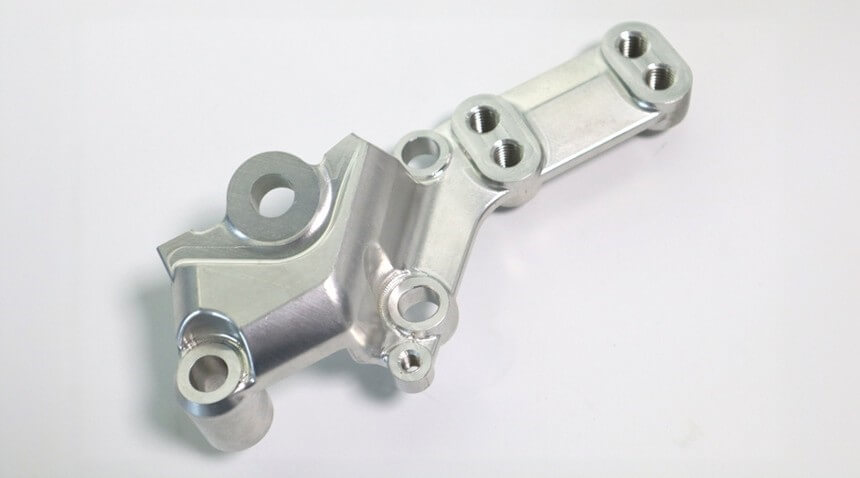
8.Application of aluminum alloy CNC machining parts
Aluminum CNC machining parts have excellent quality and are very suitable for different industries and uses. Here are some typical applications of these parts:
1) Aerospace innovation
Aluminum alloy CNC parts are very suitable for structural parts in the aerospace industry, such as engine components, fuselage components, and landing gear, because aluminum alloys have good mechanical properties. Aluminum has an excellent strength-to-weight ratio and low weight, making it a widely used material for reducing the weight of aircraft. At the same time, aluminum CNC machining also helps meet the aerospace industry’s strict quality standards for precision and reliability, and CNC-machined aluminum parts play a key role in the production of aviation structures such as wing panels and fuselage sections.
2) Automotive Engineering
Aluminum has excellent performance in manufacturing a variety of automotive parts and systems, and the automotive industry has benefited greatly from it. Manufacturers and engineers in the automotive industry use aluminum to produce CNC-machined parts in automotive engineering, especially engine components, suspension systems, transmission housings, and electric vehicle components.
Because of the advantages of aluminum alloys’ light weight, durability, and strength, CNC-machined aluminum parts are ideal for reducing the overall weight of vehicles and ensuring vehicle durability.
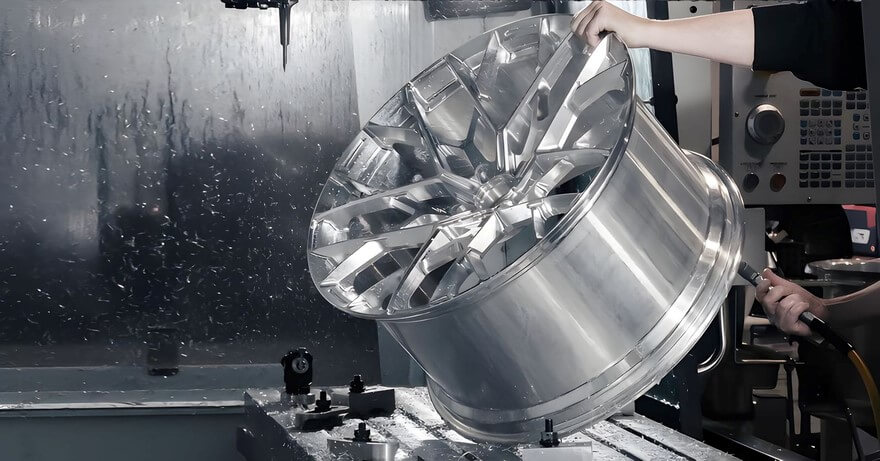
3) Consumer Electronics
Aluminum CNC-machined parts are widely used in the production of a variety of consumer electronics, including laptops, audio equipment, smartphones and tablets, and camera parts. At the same time, aluminum is also very suitable for making the casing of laptops, smartphones, and tablets because it has a sleek and lightweight design that protects the internal components of electronic devices.
Furthermore, high-end audio equipment such as amplifiers, headphones, and speaker housings are often equipped with aluminum CNC machined parts. This is because aluminum is used in this application to dampen vibrations. At the same time, aluminum CNC machined parts have the required strength and can also dissipate heat in devices such as cameras.
9.How to Choose the Right Aluminum CNC Machining Partner
After reading this article, you should have realized that aluminum has many desirable advantages and characteristics for CNC machining. Therefore, it is crucial to choose the ideal manufacturing partner to handle your aluminum CNC machining project. It is recommended to work with a CNC shop that has the right machining tools to manufacture quality aluminum parts with high precision.
In addition, the machining service provider must have experience in manufacturing aluminum parts and all the necessary quality certifications to ensure that your parts meet the required quality standards. However, it is not recommended to work with a CNC machine shop that does not have the required quality certifications and CNC machines, otherwise the required precision and accuracy will not be achieved. Similarly, custom aluminum parts should not be outsourced to partners who have no or little experience in handling such projects.
Due to the unparalleled potential of aluminum alloys, aluminum CNC machining has become a popular product manufacturing process. Aluminum alloys further improve the properties and performance of aluminum, making CNC aluminum machining an ideal manufacturing process. This guide discusses typical aluminum grades for CNC machining. It is essential to be fully prepared to use aluminum in CNC machining by fully understanding all the knowledge about CNC aluminum machining and determining the ideal aluminum alloy for your project.
